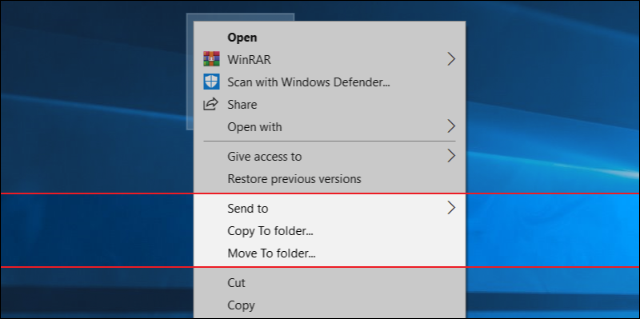How to add Copy To and Move To buttons to the right-click menu

We will provide you with a lot of videos for education and reform. You can ask about any computer malfunction that happened or is happening with you You can donate to this account, even if it is worth at least $ 1, in order to continue giving and collecting information https://www.paypal.me/abdalrahmanaltall

Windows systems that are most popular among users always provide many different settings and ways to do the same tasks, either through the user interface or through keyboard shortcuts, for example, and by talking about the power options responsible for shutting down or restarting the computer and many other options, you will find The ability to do this via the "Start" menu or through the task manager or the keyboard shortcut "ALT + F4", but sometimes you may encounter a problem in one of these methods, such as the "Start" menu, which is sometimes slow to respond, and some do not prefer Use shortcuts So what about being able to do this by pressing the right mouse button or "Right Click" in a minimal number of steps? If you want to do this you can follow this article.
Fortunately, as is the case with the Windows system, you can modify some of the default things in the system through what is called "Windows Registry", in short, it is a set of values that only the system understands and that determine some of the things and default settings used by the system, and therefore by modifying some of those values " The right way "You can customize some of the default options in the system to suit your usage.
But before explaining how to do the thing, we must note that you will be able to do this by pressing the right mouse button on the desktop only and not inside the system folders, and that when you click on any of these options, that command will be executed directly without confirmation messages. For example, when you press the "Shutdown" option, the computer will be closed immediately without any messages appearing to confirm that this command has been done. Therefore, be very careful as you will not be able to undo the matter if you click on one of the options by mistake.
The command is simple. To add basic power options such as "Shutdown" and "Restart", all you have to do is open a new file using the famous Windows "notepad" program and then copy the following codes and paste them directly into this file, then save the file with any name you want. Provided that the extension ".reg" is written at the end of the file name to save it as a registry key, then press the "Save" option:
After saving the file, go to the save location and open the file by double clicking with the left button of the mouse, then pressing the "Yes" options and then "OK" with the confirmation messages. After completion, you can right-click the mouse on the desktop and you will find a new addition menu in the Click menu On the right is called "Power Options" and through it you will find the options "Shutdown" and "Restart" added.
And to add all the other power options such as "Log off" or "Switch User" or "sleep" and many other useful options, you can download the registry file completely from the following link, where after downloading the folder and decompressing, you will find a file named "All Power Options" After opening the file and then clicking with the left mouse button on the desktop, you will find adding a new menu on the right click menu called "Power Options" and through it you will find adding all available power options, including "Shutdown" and "Restart". Also inside the folder you will find another file named "Remove Power Options" By opening that file, as we did with the previous steps, you will be able to completely remove the list of power shortcuts in case you want to get rid of it at any time.
Comments